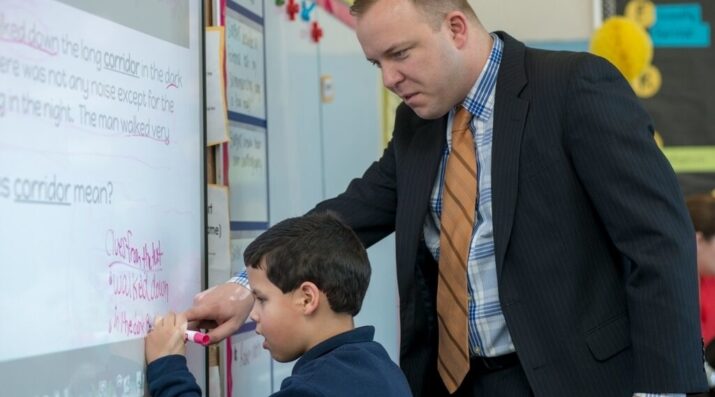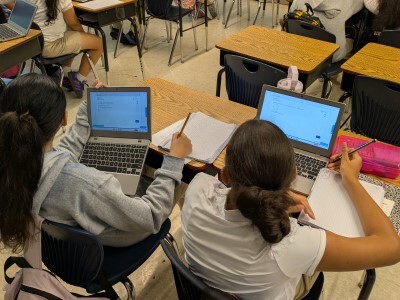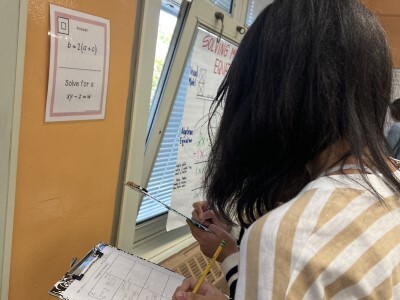3 Must-Use Practices in Successful Personalized Learning Schools
Topics

We’ve all had the experience of truly purposeful, authentic learning and know how valuable it is. Educators are taking the best of what we know about learning, student support, effective instruction, and interpersonal skill-building to completely reimagine schools so that students experience that kind of purposeful learning all day, every day.
Practitioner's Guide to Next Gen Learning
Are there specific personalized learning practices that result in more positive outcomes for students? A recent RAND study shows a power combination of three practices that set top schools apart.
Last month I shared some recent research findings about the presence of five personalized learning practices in NGLC schools and the math and reading gains achieved by NGLC and other personalized learning schools. Today I’m going to take a look at the link between the two:
Are there specific personalized learning practices that result in more positive outcomes for students?
In Continued Progress: Promising Evidence on Personalized Learning, the RAND Corporation reported findings to help answer this question.
Here are the 13 elements of personalized learning and one administrative feature RAND studied in 32 NGLC schools:
Learner Profiles |
|
Personal Learning Path |
|
Competency-Based Progression |
|
Flexible Learning Environment |
|
College and Career Readiness |
|
Administrative Feature |
|
To identify the most successful of the 32 schools, RAND looked at the schools’ effects on math and reading scores on the NWEA MAP assessment. They set what they call a high bar for success: the schools had to have fairly large positive effects (0.2 or more) in both math and reading scores that were statistically different from a comparison group. Using this criteria, they isolated five of the 32 schools as the “most successful.” Here are the basic characteristics of these five schools:
Operator
Charter = 4
District = 1
Grade Levels Served
High school = 1
Middle school = 2
Middle & High school = 2
Which personalized learning practices set these schools apart?
RAND reports that no single practice in the list above distinguishes the top five from the other schools. That finding fits with NGLC’s theory that whole school transformation, not the adoption of individual practices, is required to achieve the dramatic change in outcomes for students that are needed.
RAND did, however, find groups of practices that together separate these five schools from the rest of the pack. The most promising combination:
Student Grouping + Learning Space Supports Model + Students Discuss Data
The only five schools to use all three of these practices together were the same schools with the highest math and reading achievement. Schools that used only one or two of these practices were not as successful as the five schools that used all three practices.

From Continued Progress
Student Grouping: “Student grouping strategies are dynamic, flexible, responsive to student needs and based on data (i.e., not “tracking”). At minimum, available in ELA and mathematics classes.”
Learning Space Supports Model: “The [physical] learning space supports, or does not hinder, implementation of personalized learning.”
Students Discuss Data: “The discussion about data includes students and relates to the personal learning goals of the student.”
RAND links the use of data for grouping and the use of data in discussions with students about their learning goals. And grouping may be more successful when the learning space offers enough flexibility in the physical environment to support frequent grouping changes and collaborative learning activities.
These empirical findings lend evidence that good personalized learning practice engages students in discussions about data in relation to their own goals for learning and uses that data to group students for differentiated instruction and support in a physical environment organized in ways that support personalization.
This is a good start to better understanding what works in personalized learning. But we have more to learn:
Are there additional personalized learning practices that are just as relevant as this power combination for improving students’ math and reading abilities?
Are these same personalized learning practices important for student outcomes beyond math and reading achievement, like achievement in other content areas, high school graduation, or college completion?
Which personalized learning practices best serve the broader, richer definition of student success captured in the MyWays competencies content knowledge, creative know how, habits of success, and wayfinding abilities?




